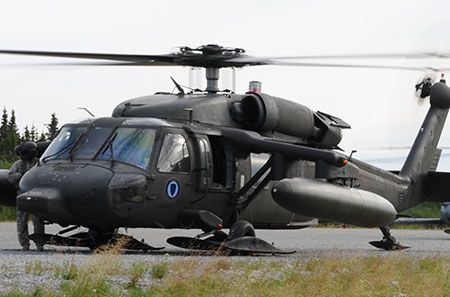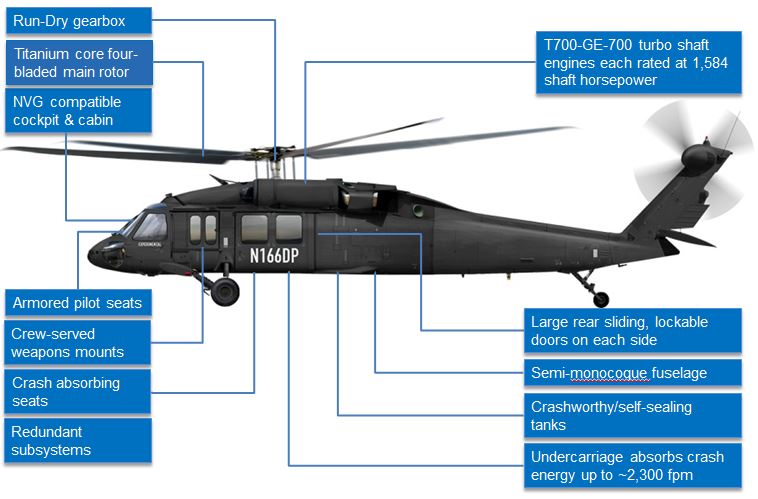Understanding the Mechanics and Design Behind Uh 60 Helicopters
The UH-60 helicopter, typically referred to as the Black Hawk, stands as a peak of modern rotorcraft technology, personifying a blend of durable engineering and intricate technicians. From its beginning to its existing models, the evolution of this airplane showcases a fusion of innovation and functionality. As we peel off back the layers of the UH-60's design, a world of intricate systems and meticulous design emerges. Comprehending the technicians and engineering behind this flexible aircraft introduces a world where precision meets power, and where each element plays a crucial role in attaining flight.
History of UH-60 Helicopters
The history of UH-60 helicopters traces back to the late 1970s when the USA Army sought a innovative and versatile utility helicopter to replace its aging fleet. In response to this requirement, the Sikorsky Airplane Company established the UH-60 Black Hawk helicopter. Introduced in 1979, the UH-60 quickly came to be a staple in army operations because of its excellent abilities.
The UH-60 was created to master a variety of missions, consisting of army transport, clinical emptying, electronic warfare, and special operations. Its capability to adapt to various duties made it a valuable asset to the U.S. uh 60. Military and other army forces around the globe
For many years, the UH-60 system has undertaken several upgrades and variants to improve its efficiency and keep rate with progressing mission needs. These helicopters have seen extensive solution in disputes such as the Gulf Battle, Afghanistan, and Iraq, showcasing their dependability and flexibility in varied operational atmospheres. The UH-60's abundant history is a testimony to its enduring tradition as a top utility helicopter.

Engine and Power Solutions
Utilizing advanced propulsion technology, UH-60 helicopters are equipped with innovative engine and power systems to make certain ideal performance and reliability in a series of functional situations. The UH-60, typically called the Black Hawk, is powered by two General Electric T700-GE-701D engines, each efficient in providing up to 1,940 shaft horsepower. These turboshaft engines give the needed thrust for the helicopter to accomplish its goals successfully, including troop transportation, medical discharge, and battle assistance.

Rotor System and Aerodynamics
Exactly how do the rotor system and aerodynamics of UH-60 helicopters contribute to their operational efficiency and trip capacities? The blades system of the UH-60 helicopter plays an important function in offering lift and propulsion. The UH-60 features a four-bladed, fully articulated blades system that permits for high ability to move and stability during flight. This layout makes it possible for the helicopter to do a variety of missions, from transportation and clinical emptying to fight operations.
The rules of aerodynamics likewise play a key duty in the efficiency of UH-60 helicopters. The streamlined body and rotor blade design minimize drag, enabling the helicopter to achieve greater speeds and far better gas efficiency. The wind resistant style of the read this post here UH-60 also adds to its capability to run in diverse ecological conditions, consisting of hot temperature levels and high altitudes.
Avionics and Trip Control Systems

In its detailed sychronisation with the rotor system and the rules of aerodynamics of UH-60 helicopters, the avionics and flight control systems develop an essential network of modern technologies shaping the airplane's operational capabilities. Avionics encompass the electronic systems made use of for communication, navigation, and checking different aircraft functions. In the UH-60, these systems include electronic displays, interaction radios, general practitioner navigating, weather condition radar, and auto-pilot systems. These avionics systems offer critical info to the pilots, boosting situational awareness and making certain risk-free and reliable procedure of the helicopter.
The flight control systems of the UH-60 are liable for converting the pilot's inputs right into the suitable modifications to the blades system, making certain secure trip and maneuverability. These systems include hydraulic actuators, servos, and computer systems that function with each other to regulate the tail and major blades, in addition to various other trip control surface areas. By exactly handling the helicopter's trip dynamics, these systems make it possible for pilots to perform a vast array of YOURURL.com missions, from transport and search-and-rescue to combat operations, with precision and confidence.
Role and Applications in Aviation
The role and applications of avionics and flight control systems in aeronautics are integral to guaranteeing the safe and efficient procedure of airplane, consisting of UH-60 helicopters. Avionics systems in UH-60 helicopters include a variety of electronic systems that help in navigating, interaction, surveillance, and managing different airplane features. These systems include digital displays, auto-pilot systems, communication radios, GPS navigating tools, and weather radar. Trip control systems play a critical function in maneuvering the helicopter airborne, maintaining security, and guaranteeing precise movements. The fly-by-wire innovation used in modern-day UH-60 helicopters converts pilot inputs into digital signals, which are after that translated by the trip control computer systems to readjust the airplane's control surface areas. In addition, these systems integrate safety attributes such as autopilot settings, terrain recognition cautioning systems, and stability enhancement systems to enhance the general security and operational capacities of the UH-60 helicopters in various goals, including army transport, clinical emptying, search and rescue, and aerial firefighting.
Verdict
In conclusion, the UH-60 helicopter is a flexible airplane with an abundant background and advanced engineering. Its engine and power systems, rotor system, the rules of aerodynamics, avionics, and trip control systems all work together to make it a trusted and efficient maker. The UH-60's duty and applications in aeronautics are vast, ranging from military operations to look and save missions. Its continued development and use demonstrate its value in the field of aeronautics (uh 60).
In its complex control with the blades system and aerodynamics of UH-60 helicopters, the avionics and flight control systems form a vital network of innovations shaping the aircraft's operational capacities.The trip control systems of the UH-60 are accountable for equating the pilot's inputs into the appropriate changes to the rotor system, guaranteeing stable trip and ability to move. Avionics systems in UH-60 helicopters include a variety of electronic systems that aid in navigation, communication, monitoring, and managing various aircraft functions. Additionally, these systems integrate safety attributes such as auto-pilot modes, terrain recognition alerting systems, and stability enhancement systems to improve the overall safety and security and operational capabilities of the UH-60 helicopters in numerous objectives, including army transport, clinical evacuation, search and rescue, and airborne firefighting.
Its engine blog and power systems, rotor system, the rules of aerodynamics, avionics, and trip control systems all work with each other to make it a trustworthy and efficient machine.